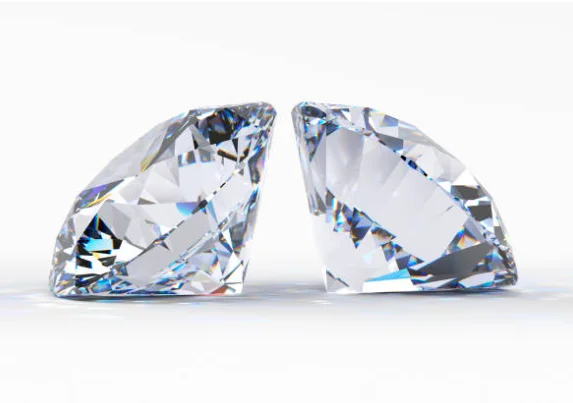Channel your inner Vogue and Confidence!

Diamond have always been treasured for love, wealth, and lasting worth. Now, a game changer has arrived: lab-grown diamonds. These gems are made with advanced technology but look, feel, and shine the same as mined ones. But the biggest difference among them is that they cost much less. Many buyers, especially those focused on sustainability and cost, are turning to them. This raises a big question: Do natural diamonds still hold greater value, or are lab-created ones the better investment?
Billions of years go into making a natural diamond under the Earth’s surface. But not everyone is concerned with how they’re taken out. Mining has raised many ethical questions, and that’s why more people are thinking about lab-created diamonds. These diamonds grow fast with the new techniques and modern tools. They don’t cause harm and don’t cost as much. They’re clean, polished, and look almost the same. But when it comes to future worth, no one really knows yet.
A big question for investors and buyers is how well diamonds keep their value. Natural and lab-grown diamonds differ in price, durability, and resale potential; market trends also play a role. This guide will compare both, making it easier to choose the best option. Buying for an engagement ring or as an investment? Knowing these differences could mean big savings.
Investing in diamonds? First, it’s crucial to know how natural ones differ from lab-created options.
One of the most significant factors influencing consumer choice is the price difference between natural and lab-grown diamonds.
Diamonds have their price set by four factors: Carat weight, Cut, Color, and Clarity. Bigger sizes and better quality grades make them rarer, which drives up the cost. Mining them takes time, effort, and resources, and cutting and distributing them also adds to the expense. These steps all push the price even higher.
The price of lab-grown diamonds is usually lower. The lab diamonds are created in a controlled setting, with a consistent supply of temperature and pressure. This reduces the costs of lab diamonds linked to rarity and mining. Many buyers get a bigger and better-quality lab-grown diamond for the price of a smaller natural one.
The difference in price between lab-made and natural diamonds keeps on growing. Industry reports show that the cost of lab-grown diamonds has decreased over the last ten years. They are an appealing choice for anyone trying to invest because of this price reduction. Yet, as we will see, there are considerations to take into account regarding long-term worth.
Buying diamonds for personal or financial reasons?, One should consider both durability and quality of both types of diamonds to make a better investment.
Natural and lab-grown diamonds both rank 10 on the Mohs scale. This shows their high resistance to scratches, chips, and damage from regular wear. Taking good care of them can make both types last for many years.
The quality of a diamond is evaluated using the Four Cs rule. Because lab grown diamonds are created using exacting methods, they have better cut and clarity. In contrast, the quality of lab-grown and natural diamonds varies. Every stone ought to be evaluated according to its unique merits.
istock/Sarawut Jaimassiri
Resale value is a basic consideration for investors. Learning how natural and lab-grown diamonds hold their value over time is essential to learn.
The resale value of natural diamonds usually retains over time. Natural diamonds keep their value based on size, how well they’re made, and what people currently like in the market. Some can be sold again for 20% to 60% of what they first cost. When a diamond is special, hard to find, or has a story behind it, it usually sells for more.
Lab-grown diamonds bring back much less money than real ones. Many times, people get only 30% to 40% of what they paid. This happens a lot because labs can make many of them. They aren’t rare. As a result, their resale value is lower.
Several factors influence the diamond market today, including
Lab-made diamonds are now a favorite for many younger shoppers. They cost less, are economically safe, and are similar to mined ones. That’s why fewer people are going for natural ones; the market has shifted, and trends have changed fast. Yet, natural diamonds still remain key, particularly among collectors and traditional buyers. The resale values of lab diamonds and natural diamonds change mostly with the shift in market trends.
Diamonds can be more than just beautiful; they are a worthy investment. But before jumping in, think about some important considerations. Price is one of them, and there is a chance that the value might grow. And don’t forget how steady the market trend shifts.
A natural diamond with the highest grade and rarity is expected to retain the highest value. For that reason, people see natural diamonds as a future valuable investment. Not every diamond will grow in price as time passes. Still, the market moves up and down, some diamonds won’t go up in price, even after years.
Many people don’t see lab-grown diamonds as smart investments. Their value usually goes down over time. As the technology to make them gets better and more common, prices drop. That’s why they’re mainly bought for how they look or the peace of mind they bring—not for making money.
Experts in the field say lab-made diamonds are good for those who care about budget and doing the right thing. But they might not be great for someone who wants to see their diamond go up in value. Real diamonds, especially the rare and perfect ones, are more likely to keep or grow in value.
Future trends show that natural diamonds might slowly rise in value, especially those seen as good for investment. Lab-grown ones, even though more people like them now, may not grow in value. That’s because they’re made in large numbers and cost less to produce each year.
No big difference in strength between lab and mined diamonds; both are made from the same material. Their hardness is equal, and they also resist scratches and damage well. That means they keep their shine over time; you won’t have to worry about them wearing out. With care, they stay just as attractive; their shape stays solid, and their shine lasts. Great for daily use or for keeping as a memory to pass down later.
Lab-grown diamonds are produced in a lab setting. They are made using techniques like HPHT or CVD, which simulate the natural conditions needed for diamond creation. On the other hand, natural diamonds develop over billions of years deep within the Earth’s mantle, where heat and pressure are constant.
Many people look at diamonds when thinking about investing. It’s smart to consider how rare the diamond is, how many people want it, and how well it holds value over time. Natural diamonds, especially the bigger and better ones, have usually kept good resale prices; they may also grow in value.
Lab-made diamonds are affordable and friendlier to the planet. But since they can be made in great numbers, they don’t hold value as well.
Natural diamond jewelry might suit you better if you’re focused on growing your money long-term. But if you’re more concerned about cost or doing the right thing, lab-made stones are a strong choice, too.
Think about what matters most to you. Your values and goals will help you pick the right type of diamond to match your plan.

Are the men in house ready to take their style game up a notch? Aly at Vogue Vocal is the eyes and ears of entertainment industry with that Gen-Z x-factor! Aly’s personal style statement raises the bar high and knocks it out of the park so trust him for picking the best for Vocal Fashion, our e-magazine edit, the heart and soul of Vogue Vocal!